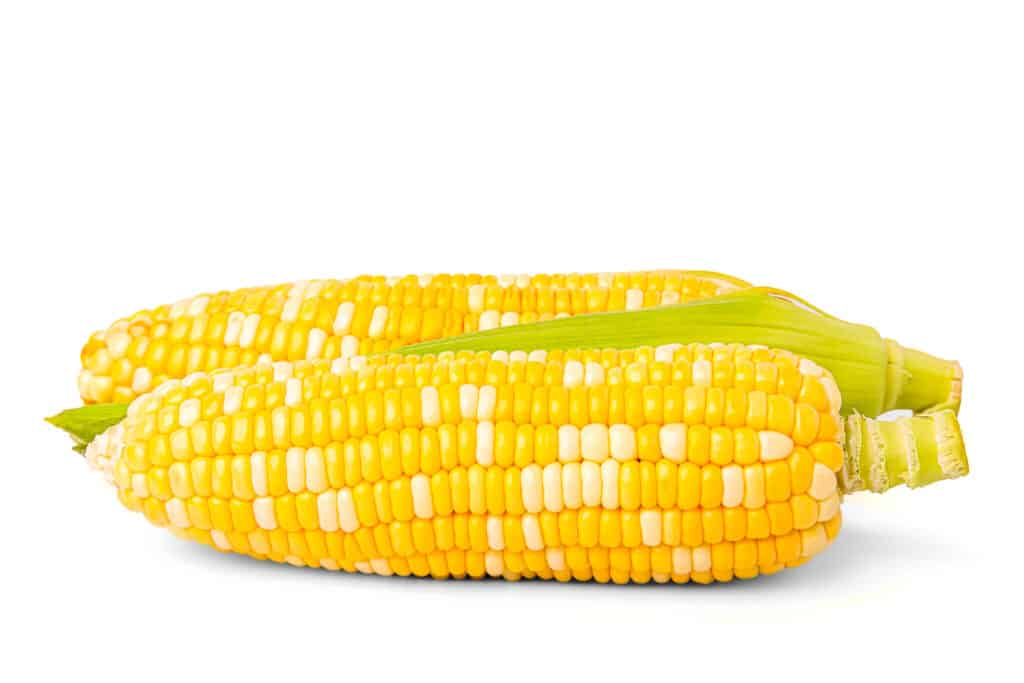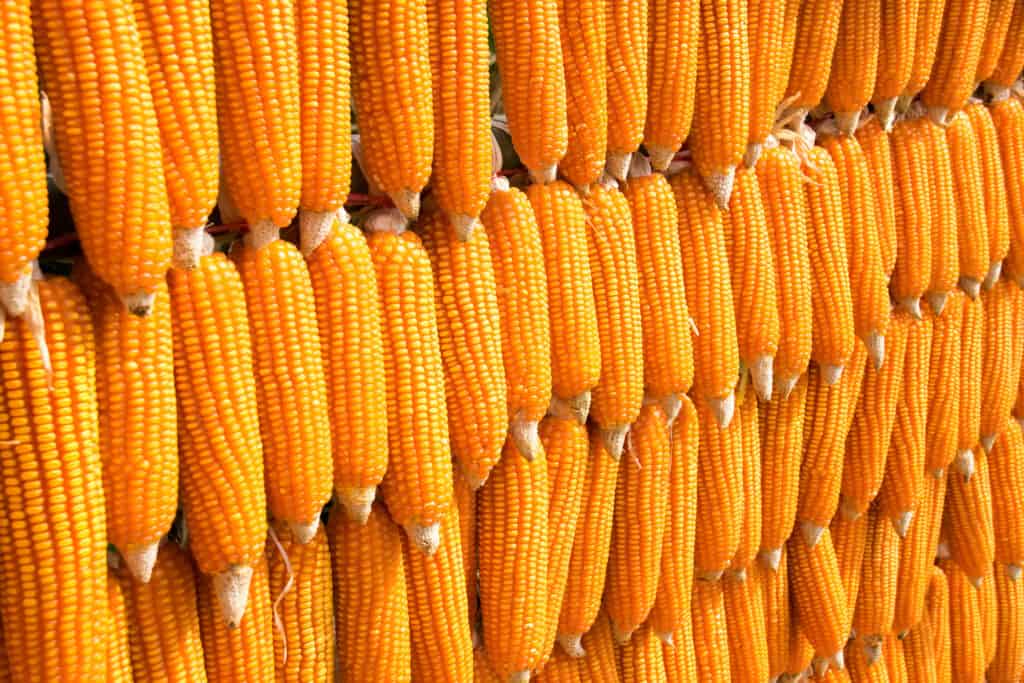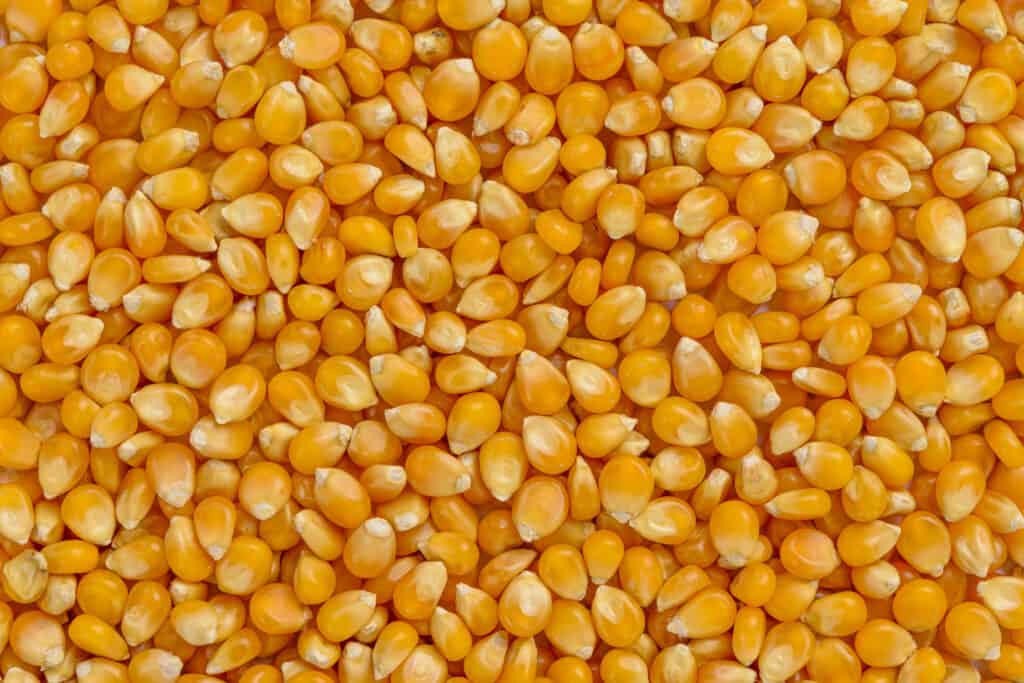Corn in all its varieties has been an important crop all around the world for centuries. We use it to feed ourselves as well as animals; it can be consumed in many ways, from corn on the cob, to popcorn, to tortilla chips, and so much more. Because of the different ways you can prepare it, corn has often been thought to be a vegetable. However, corn is considered a fruit because of the way it grows. So, what’s the truth? Is corn a fruit or a vegetable?
Is Corn a Vegetable or a Fruit?

Corn is regarded as both a fruit and a vegetable.
©iStock.com/prayong kotjuk
From both a culinary and a botany point of view, corn is considered to be both a fruit and a vegetable. Unlike most fruit-vegetable plants, like eggplants, corn is also a grain. How could this be? Let’s find out!
Since corn is produced from the flower or the ovary of the corn plant, it is considered to be a fruit botanically and scientifically. To get more specific, the technical classification of corn is caryopsis. A caryopsis is a fruit that only has one seed, and the pod of this seed and the flesh of the fruit are joined together tightly. Famously, a second example of a caryopsis that you can eat is wheat! Many caryopses are known to be grains, in fact.
Another part of corn that is considered to be a fruit is, interestingly, popcorn! Like certain other grains, popcorn is considered to be a fruit because the kernels are technically seeds of corn. On the other hand, whole corn, also known as corn on the cob, is considered to be a vegetable from a culinary standpoint because of the way that we cook it.
Since there are many different varieties of corn and each of them has their own distinctive characteristics, let’s learn more about them!
What Are the Different Types of Corn?

Dent corn is one of the three main corn varieties.
©iStock.com/ananaline
There are three main varieties of corn: dent corn, sweet corn, and flint corn.
Dent corn, which is sometimes called field corn, is considered to be a starchy vegetable. The kernels from this corn are identifiable by the dimple—or dent—that forms in the skin. Dent corn is low in sugar and is often used in animal feed and can be used to make tortilla chips, too!
Sweet corn is the most popular variety of corn found in grocery stores. It is eaten fresh and has shorter shelf life than the other two main kinds of corn. It is known for its sweet taste and its kernels are juicy. Sweet corn also comes in several different subcategories, including white, yellow, and even bicolor corn.
Flint corn is one of the oldest types of corn still around. It was one of three varieties that were grown and harvested by the indigenous people of North America. It comes in a variety of colors, and sometimes the kernels on the same cob are different colors. Flint corn is known to be hardy and enduring and gives us kernels that are often used to make popcorn.
Where Does Corn Come From?
Corn has a long history that begins in North America, specifically in Mexico. Back then, corn stalks were much smaller than the ones we know today and they only offered a small number of kernels hidden behind a much tougher husk. It came from a wild grass plant called teosinte, which can still be found in Mexico today.
About 10,000 years ago, corn was first domesticated by the indigenous people of Mexico and several thousands of years later, it had spread as far north as the state of Maine and as far south as Brazil. In fact, the indigenous people of North America taught the European colonists how to grow and harvest corn. Then, beginning in the 15th century with European expansion, corn was brought to Europe where it continued to spread.
Today, about a billion tons of corn are produced all over the world. It is the most important crop in the United States, where about 90 million acres of land are used for corn production.
What Are the Health Benefits of Corn?

Corn has a lot of health benefits.
©iStock.com/Julio Ricco
There are many different health benefits of corn. Since corn is a whole grain, this means that it is full of nutrients and vitamins, each of which provides its own particular benefit.
As we know, corn, especially certain types of it, is often considered to be a starchy vegetable. On average, starchy vegetables are great sources of different vitamins such as vitamins C and B, as well as potassium. However, starchy vegetables are also known to raise a person’s blood sugar because of the higher concentration of carbohydrates found in them. In corn’s case, it does not raise a person’s blood sugar as fast as other starchy vegetables. It also contains less fat, sugar, and sodium when compared to other starchy vegetables.
No matter what kind of corn you eat, there are always plenty of nutrients to be found. Some of these nutrients include:
- fiber
- protein
- zinc
- copper
- vitamin B-6
- niacin
- potassium
In addition to these vitamins and minerals, eating corn regularly can also improve your eye health and help prevent diverticular disease. In addition, corn can also provide you with antioxidants. An antioxidant helps your cells and delays or even prevents damage to them.
Corn in its natural state—which is popcorn, corn on the cob, and corn kernels—is even gluten-free!
The photo featured at the top of this post is © iStock.com/prayong kotjuk
Thank you for reading! Have some feedback for us? Contact the AZ Animals editorial team.






